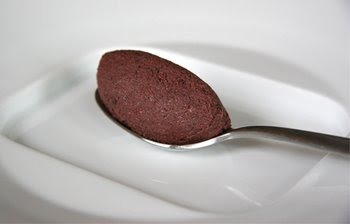Does it take fancy ingredients to make great food?
The answer would be emphatically `NO'.
While it is definitely true that wondrous ingredients combined with talent can reach great culinary heights, it is by no means necessary that good food can only come from expensive ingredients. In fact, it is actually the mark of a great chef to be able to create good food out of humble or even poor ingredients.
Any chef can make a fancy risotto with truffles but it takes a truly good chef to make a great meal out of the ordinary (needless to say the ingredients can't be total crap either.)
What matters, as it always has since time immemorial, is technique.
Now, we should note that the words "modest" and "biryani" don't really go together. A "true"
biryani is the food of kings where a day is too short, and too much expense is too little.
However, contradictions being the soul of poetry, the CC decided to make an old standby, the poor student's version of
biryani that he once used to make more than a decade ago. What has changed since is not the recipe itself but the CC. Some of you may even recognize it, or even may have eaten it
chez le CC's.
The CC set himself a challenge to make it with ingredients he used back then.
The vegetables were frozen. The
basmati rice was, of course, a staple. Even the spices were from one of those readymade mixes. Only the humble onion was fresh. But the details were definitely different.
The results (and the recipe) are presented for your delectation.
Ingredients(Read the notes below before doing anything.)
1 cup
basmati rice
frozen vegetables
1 onion
2 sticks cinnamon
4-5 whole "black" cardamom (
badi elaichi)
5-6 cloves
1 tsp peppercorns
1 tsp cumin seeds
2 bay leaves
2 tbsp "prepared"
biryani masala
1/4 cup cashewnuts
oil
salt (to taste)
Recipe.jpg)
First the
basmati rice needs to be cooked in the "loose" Indian manner. This means you have to cook it like pasta in
heavily salted water. Yeah, the heavily salted is necessary (and we will deal with the problem of the salt below.)
It should be just under par-boiled (which for the CC's rice took 9.5 minutes.)
Please note the 9.5 as opposed to 9 or 10. That is a detail which the CC would've missed a decade ago.
The rice was drained, washed in cold water (to stop the cooking, and wash the surface salt off) and left to drain in a colander for at least an hour (the CC waited for two.)
Periodically, the rice was fluffed, and those of you who possess a Jamie should outsource this step.
.jpg)
Then the vegetables were gently thawed in warm water, and left to drain for an hour.
Freezing damages the cellular walls of vegetables because the internal ice shards puncture the walls, and they are going to lose a substantial portion of that cellular water over those two hours. Put them over a bowl to drain. (Another detail.)
What is the goal of all this draining and drying? Well, we need to fry the stuff, and we can't fry wet stuff so it needs to be relatively dry so that
Maestro Maillard can do his magic. Yep, that's a detail too.
.jpg)
After you peel the onion but before you cut it, STOP. Look at the onion from above. Just observe. No, don't argue, just do it.
The rings are elliptical, aren't they?
The first vertical cut should be along the long axis of the ellipse so that when you get rounds, you get concentric circles of roughly the same length. After that you need to break loose the rounds into clean linear segments with your hands.
Yes, this matters. Yes, this is detail. Yes, this is a refreshing change from the CC's wasted youth.
The recipe itself is going to be shockingly simple after all this prep.
.jpg)
Only add half the oil initially. The reason is that the onions are going to absorb most of that oil so you will need the rest to fry the rice.
Now, we handle the frying. The sequence is simple.
Spices first, in the order of size so that they won't burn, which means:
whole cinnamon → cardamom → cloves + peppercorns → cumin → bay leaves.Then the ingredients in reverse order of "wetness" which means:
cashewnuts → onions → rice → ground spices → vegetables.The water content of the onions is going to "freeze" the frying of the spices and prevent them from burning but the cashews will keep frying.
Why? Nuts have fat content.
Note the comment on the oil again which means you will need to add the extra oil slowly as the rice fries.
Everyone listen to all the details? Read it again. And one more time.
All the culinary magic is in this mumbo-jumbo which probably would've sounded like gibberish even to the CC a decade ago. Age certainly brings culinary wisdom (the other kind is still MIA.)
.jpg)
Step after cashews.
.jpg)
Onions tossed in.
.jpg)
Onions are fried. Note the darker color of the cashews as "proof" that they keep frying.
.jpg)
Rice goes in.
.jpg)
Spices go in.
.jpg)
Vegetables go in.
.jpg)
Keep on fryin'.
.jpg) Who wants some biryani?
Who wants some biryani?
 Copyright © 2001, James T. Ehler (published with permission.)
Copyright © 2001, James T. Ehler (published with permission.)
.jpg)
.jpg)
.jpg)
.jpg)
.jpg)
.jpg)
.jpg)
.jpg)
.jpg)
.jpg)
.jpg)
.jpg)
.jpg)
.jpg)
.jpg)
.jpg)
.jpg)
.jpg)
.jpg)
.jpg)
.jpg)
.jpg)
.jpg)

.jpg)
.jpg)
.jpg)
.jpg)
.jpg)
.jpg)
.jpg)
.jpg)
.jpg)
.jpg)
